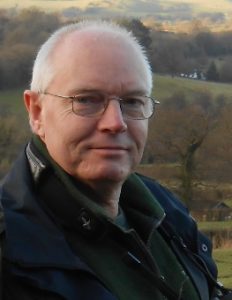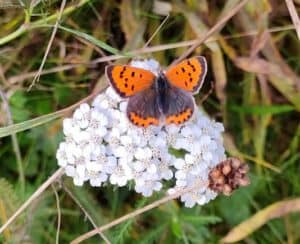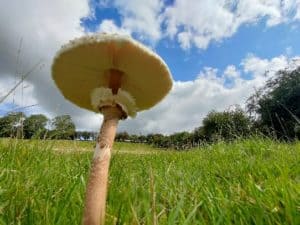Steve Docker joined the Field Studies Council Publications Unit in January 2023. Here he describes his pathway to appreciating biodiversity and understanding the changing state of nature. This is the first of a new series of blogs about his work and interests.

Not that long ago I couldn’t tell the difference between the song of a robin and that of a wren. They are both common and vocal bird species in the United Kingdom and I perceived the sounds they made as generic ‘birdsong’.
I would like to be able to say that I’ve always been interested in wildlife but that isn’t really the case. During my early years I was pre-occupied with family and career and had little time to devote to such things. Then, work took me to South Africa and accompanied by my wife, we took the opportunity to go on safari in Botswana. We both fell in love with Africa and I was fascinated by the mega-fauna to be found there. Upon our return home I so missed the wildlife experience that I decided I wanted to know more about our own British wildlife. So, in my early 40s, I began my ‘learning journey’.

I took part in a wide range of courses and workshops, many of them provided by the Field Studies Council. This proved to be a very effective way to learn new skills. They helped me to develop my knowledge and gain in confidence in a relatively short time. Moreover, they provided me with a range of learning strategies that I could apply when on my own. This greatly enriched my time in the field. Initially, mammals were the focus of my attention but very rapidly I cast the net wider. I investigated birds and all manner of natural history subjects.
My very first course was ‘The Otter’ at Preston Montford. Since then I have participated in a range of natural history courses, field trips, wildlife surveys and holidays. In 2013 I took on my greatest educational challenge and embarked upon a part-time Master of Science degree in Biological Recording. This pushed me outside of my comfort zone, covering biological data management, research methods, fungi, birds, ground beetles, mosses, bats and grasses. Phew! All were delivered by the Field Studies Council. I even undertook research into European nightjar bioacoustics, a fancy way of saying the scientific study of bird song!
Over two nightjar breeding seasons I recorded the night time sounds at a coniferous plantation and associated heathland clearings. Then, I spent many hours searching through an extremely large acoustic dataset, which yielded over 600 male nightjar songs!

Well, I can now tell the difference between the song of a robin and that of a wren, and much more besides, thanks to the many courses and workshops that I’ve attended over the years. In case you’re wondering, robin song is unstructured and sounds melancholic or mournful. The song of a wren is a burst of energy and has a distinctive ‘rattle’ part way through. Learning bird song takes time to master and requires careful listening to your local birds, but it’s well worth the effort.
Now, when I’m carrying out a breeding bird survey or monitoring the biodiversity of my local woodland I find it hard to believe just how far I’ve come in a relatively short time. I suppose the message is that with the right help, with patient guidance and mentoring, it’s not too late to learn new skills. However, be warned for nature is full of surprises and there is always more to learn and therefore more courses to do. So, like me, you may become addicted! You can find out more about my interests at my personal website Eclectic Ecologist.
I’m now working for the Field Studies Council as Resource Development Officer, part of the Publications team. This involves working on identification resources such as the WildID fold-out guides and Aids to Identification in Difficult Groups of Animals & Plants (AIDGAP).
More next time …
